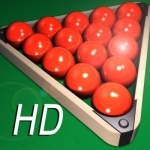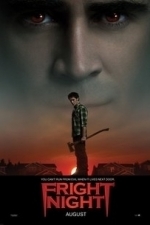
Longitudinal Structural Equation Modeling: A Comprehensive Introduction
Book
This comprehensive resource reviews structural equation modeling (SEM) strategies for longitudinal...

Jillian Michaels – Training and Meal Plans
Health & Fitness
App
Train with Jillian Michaels! She’s helped millions reach their goals and now the worlds leading...

ColorButler
Lifestyle and Education
App
ColorButler, the digital color swatch for color consulting: 35 colors that suit your color type...

Unicorn Food Style Maker
Games and Entertainment
App
>Hungry? Why eat boring normal food when you can eat colorful and trendy UNICORN food?! >Help...

Ruler Pro - Cam Tape Measure
Utilities and Productivity
App
'Tape Measure Camera Ruler' measures dimensions (height, length, width, size, area and distance) of...

Pro Snooker 2017
Games and Sports
App
Following the worldwide success of its sports games iWare Designs brings you Pro Snooker 2017,...

myETraining
Sports and Health & Fitness
App
Turn your smartphone or tablet into a personal trainer: ELITE's myETraining App is a new and...
Gareth von Kallenbach (980 KP) rated Fright Night (2011) in Movies
Aug 7, 2019
Boasting an impressive cast which includes Anton Yelchin, Colin Farrell, David Tennant, Christopher Mintz-Plasse, and Toni Collette, the remake does not try to reinvent the wheel, but instead takes the formula of the original and creates an entirely new entry into the saga.
For those unfamiliar with the series, Yelchin stars as Charlie Brewster, a young man who is trying to balance watching over his single mother, and his growing relationship with a girl way out of his league named Amy (Imogen Poots). He is also wrestling with becoming part of a cooler crowd at the cost of alienating his geeky former best friend, Ed, played by Christopher Mintz-Plasse.
Colin Farrell plays the handsome and suave new next door neighbor who easily charms Charlie’s mom, played by Toni Colette. Unbeknownst to his neighbors, the charming and charismatic Jerry, played by Colin Ferrell, is actually a vampire who’s come to their Las Vegas suburb to continue his nighttime hunts. Ed has become suspicious of the recent disappearances in their community and confides to Charlie that he’s had Jerry under surveillance and knows that he is a vampire.
Needless to say this does not sit well with Charlie, who distances himself further from Ed. But when Ed goes missing, Charlie decides to do some investigating of his own. Charlie turns to a local Vegas performance artist named Peter Vincent (David Tennant), whose vampire-themed show portrays him as an expert in fighting the undead. While at first skeptical over Charlie’s claims, a few devastating confrontations with Jerry and his minions forces Vincent to rethink his role. The two unlikely allies soon find themselves in a deadly race against time to defeat Jerry and save their loved ones before it’s too late.
The film cleverly combines horror and comedy and does a good job of providing some suspenseful moments in between the blood and gore, managing to squeeze in more than a few laughs along the way. While not overly scary, the visual effects work is solid and aside from the converted 3-D is a really enjoyable to watch. The film would’ve been much better had it been shot in 3-D or simply left as a 2-D film as the conversion really didn’t offer anything of value as is often the case in these lab converted efforts.
The cast works very well with one another and Farrell cheekily introduces a few new wrinkles to the vampire lore. I really enjoyed David Tennant’s performance and should they do a sequel I certainly hope that they bring him back. Anton Yelchin gives a reliable performance but I was surprised that Christopher Mintz-Plasse did not have a bigger role but he does have some memorable moments in the film. What really impressed me was that the film did not attempt to do a shot-by-shot remake of the original but instead took the premise of the original and offered a fresh take that easily could have been issued as the third chapter in the series rather than a reboot. While there were nods to the original, outside of the premise it was very much its own film.
The film is not going to set any high marks for new standards in horror nor is the plot fresh and original. It simply knows what its target audience and source material are and sets a course right down the middle without attempting to deviate too much one way or another. “Fright Night” just might be perfect for those looking for a dose of nostalgia and some highly suspenseful, fun entertainment.
Sarah (7800 KP) rated WandaVision in TV
Mar 7, 2021
WandaVision is set not long after the events of Endgame, and follows Wanda Maximoff (Elizabeth Olsen) and Vision (Paul Bettany) as they live an idyllic suburban life in the small town of Westview. However all is not as it seems; Wanda and Vision appear to be starring in their own 1950s style sitcom, as a odd couple with superpowers trying to blend in with the neighbours, including nosy Agnes (Kathryn Hahn) and committee leader Dotty (Emma Caulfield). Strange things soon start happening, and as Wanda and Vision become increasingly confused and suspicious about their new life, outside of Westfield agent Jimmy Woo (Randall Park), Dr Darcy Lewis (Kat Dennings) and Captain Monica Rambeau (Teyonah Parris) are also trying to figure out what’s going on.
Setting WandaVision in the style of various popular sitcoms from the 1950s onwards is a genius move. BeWitched, I Love Lucy, Malcolm in the Middle and Modern Family to name but a few of the obvious influences on show here, and this changing sitcom style really works and blends very well with the super powered action we know and love from the MCU. I’ll admit that I’m not a massive fan of sitcoms in general and my knowledge of older ones pre-1990 is limited at best, however even I could appreciate the love and care that has gone in to crafting this. It looks amazing and feels so authentic, from everything to the set design, costumes and change in aspect ratio.
It is of course helped by the stellar performances by Elizabeth Olsen. In the MCU so far Wanda has been rather sidelined and Olsen has been given little chance to shine. However she is undoubtedly the star of WandaVision and has been given ample opportunity to show off her versatility and talents, and she certainly does. We see a side of Wanda we’ve never seen before and Olsen’s ability to transform into each decade’s sitcom character is brilliant to watch. It’s a shame then that Bettany’s Vision doesn’t quite match up. No matter the decade, Vision never really seems to change much and while he is funny on occasion, I’m not entirely convinced that seeing more of Vision is a good thing. He’s always been the aloof synthezoid and this may have made him a little too ‘human’. However that said, it was still nice to see a lot more of Bettany than we have done in a while.
Once you get over the sitcom styling, the first couple of episodes are quite slow and had it continued in this vein I may have struggling to keep interested. However in typical Marvel style, it soon picks up and immerses us into the full MCU experience I was expecting. While I don’t want to say much about the plot, from episode 3 onwards I was hooked and the story never felt drawn out, and this wasn’t just due to the short half hour episodes. Unravelling the world of WandaVision was hugely enjoyable and one particular character reappearance in episode 5 had me almost squealing in geeky happiness. The only thing WandaVision is really lacking is the humour and camaraderie that have made the rest of the MCU films into what we love best. Yes there is humour and fun, but this mostly comes from Woo and Darcy, and I think it’s noticeable that the funnier Avengers are missing.
For me, WandaVision isn’t perfect however it was still hugely enjoyable and has definitely given me a new found appreciation for Wanda as a character. And mor important of all, it’s filled a rather large Marvel shaped hole brought on by coronavirus. Bring on The Falcon and the Winter Soldier.


